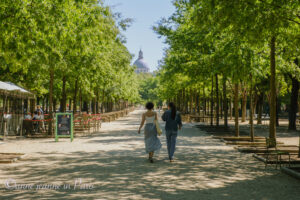WHO AM I ? my BIO
DALIDA , DIVA and FASHION ICON (1933 – 1987)
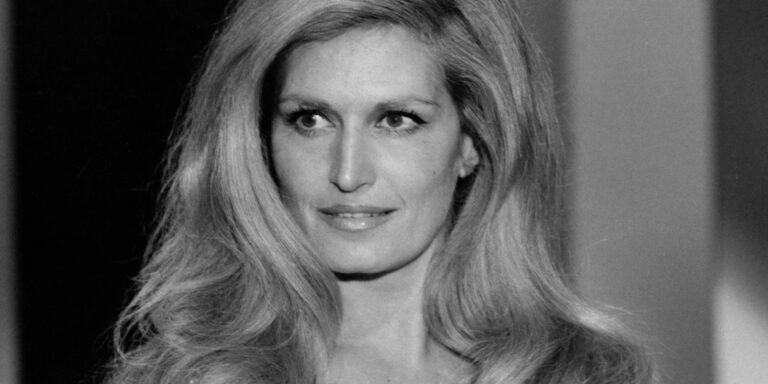
Dalida was one of France’s most beloved singers from the 1960s to the 1980s, and remains an icon to this day.
She achieved massive success, with over 170 million records sold worldwide and more than 70 gold records.
In Montmartre, one of the main squares now bears her name: Place Dalida.
For many, she is a true legend, a glamorous, tragic diva.
“I know what my life is. My husband it’s my public. The songs are my children”
a fashion legend

In 2017, to mark the 30th anniversary of her death, the Palais Galliera (Paris Fashion Museum) held a major retrospective of her wardrobe (April – August 13).
Dalida loved fashion and wore creations by Dior, Chanel, Yves Saint Lauren, Azzaro, Lacroix and more.
She was elegant, bold, and always sophisticated.
For more details about Palais Galliera (10 avenue Pierre 1er de Serbie, Paris 16) see my article : Galliera, fashion and elegance
🎥 My video of the Dalida exhibition at Palais Galliera (by Anne Jeanne in Paris)
Dalida and Montmartre
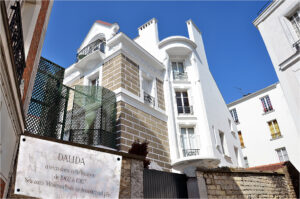
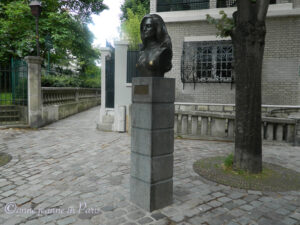
Dalida lived in Montmartre during 25 years, from 1962 until her death in 1987.
In the early 1980s, she bought a charming 1900s townhouse near Sacré-Coeur, which became her peaceful refuge.
Today, Place Dalida in Montmartre features a bronze bust of her, sculpted by Alain Aslan, a beloved photo spot for fans.
early life and miss egypt

Born Yolanda Gigliotti on January 17, 1933, in the suburbs of Cairo (Egypt) Dalida came from an Italian immigrant family.
She grew up in a musical household, her father was first violinist at the Cairo Opera. Her mother tongue was Italian, but she also learned Egyptian Arabic and French.
Despite eye problems in childhood, she had a happy upbringing. Her family wanted her to become a secretary, but she dreamed of being an actress, fascinated by Hollywood.
At 19, she secretly entered and won the Miss Egypt contest. She began working as a model and actress in Cairo and soon set her sights on Paris.
A new life in Paris
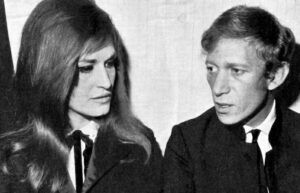
In 1954, she moved to Paris and became “Dalida”.
She began taking singing lessons and was soon hired to perform in a cabaret on the Champs-Elysées. Her talent was quickly notice. Impressed by her performance, the Olympia’s owner introduced her to music executives Lucien Morisse and Eddy Barclay.
Lucien Morisse became her manager and later her husband (they married in 1961 after he divorced his first wife).
The "bambino" years
Her breakthrough came with the song Bambino, which was palyed non-stop on Europe 1 radio and topped the French charts.
She then performed at the Olympia beside Charles Aznavour.
In 1957, she received her first gold record. Bambino had sold over 300 000 copies.
She toured France and Italy and her fame soon spread throughout the rest of Europe.
In 1961, she performed for an entire month at the prestigious Olympia music-hall.
Her younger brother, Bruno (known as Orlando) became her manager, and her cousin Rosy became her secretary, a close family team that supported her throughout her career.
Tragedy: Luigi Tenco
In 1966, Dalida fell in love with singer-songwriter Luigi Tenco. They planned a duet at the Sanremo Festival in Iutaly with the song Cia Amore Ciao.
After their performance failed to win a prize, Luigi tragically took his own life.
Dalida was devastated and attempted suicide herself a few months later.
🎥 Watch: Dalida and Luigi Tenco, San Remo (Italy), 1967
reinventing herself
In the late 60’s, after Luigi Tenco’s death, Dalida reinvented herself : she started to read a lot (philosophy, psychology) and started to practice yoga and meditation and traveled regularly to India then went into analysis.
But she also reinvented her musical style and went on a series of concerts in France, in Italy, then all over the world.
In 1970, she released “Darla dirladada” followed by “Avec le temps”, a more poetic and emotional repertoire.
Later that year, Lucien Morisse, her former husband, also died by suicide. A new wound.
duet with alain delon
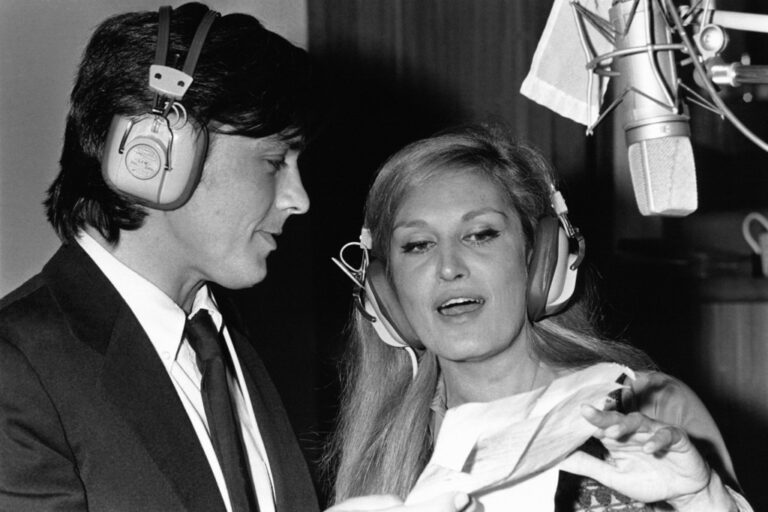
In 1972, she recorded “Paroles Paroles” with her longtime friend Alain Delon.
It became a major hit in France and Japan and remains one of the most iconic songs.
Her romance with richard chanfray
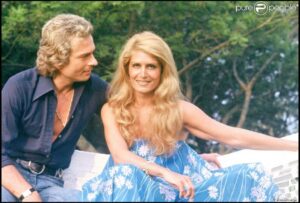
The same year, she met Richard Chanfray , a charismatic figure who wanted to be known as the Count of Saint Germain. Their love lasted nine years (her longest love story) and during that time she fully embraced her image as a glamorous star.
They split in 1981, and in 1983, he too died by suicide, another devastating blow for Dalida.
Internationa success in the 70s -80s
Dalida remained a superstar. In 1973, “Il venait d’avoir 18 ans” reached the top of the charts in nine countries. (3.5 million copies in Germany alone).
This is my favorite song by Dalida, full of emotion and elegance.
🎥 Watch: Dalida “Il venait d’avoir 18 ans” (1975)
In 1974 : “Gigi L’Amoroso” became one of her biggest hits, topping charts in 12 countries. Then she toured Japan, Quebec, then Germany.
In 1975, she was awarded the prestigious Prix de l’Académie du Disque français”, and was frequently seen on French TV.
Then another huge success “J’attendrai”.
In 1977, she relased SalmaYa Salama, a traditional Egyptian song that she recorded in seven languages. It was a phenomenal success in France and the Middle East.
disco queen
In the 80s, she recorded “Generation 78”, a medley very influenced by the 70’s disco wave.
In 1979, She recorded “Monday Tuesday”
Dalida changed her style, dancing with troupes of performers, wearing glittering costumes and dazzling audiences.
In 1980, she performed a spectacular Broadway-style show at the Palais des Sports in Paris.
With 30 musicians and 12 dancers and with Lester Wilson as her choreographer, (L. Wilson was the choreographer of John Travolta in Saturday night fever).
She sold out 18 shows, a record for a solo female artist at the time.
In 1981, she received a diamond disc for 80 million albums sold over her career. and embarked on another world tour.
Back to France, she recorded “Mourir sur scène”. Her popularity was as great as ever.

final years

In 1984, eye surgery forced her to pause her careeer.
In 1986, She play a leading role in the film “Le Sixième jour” (directed by Egyptian filmmaker Youssef Chahine)
dalida's death
On May 3, 1987, Dalida ended her life. She left a final note:
“Forgive me life has become unbearable for me…”
She is buried in Montmartre cemetery (18th arrondissement of Paris). Her tomb is adorned with a life-size statue and often covered in flowers.
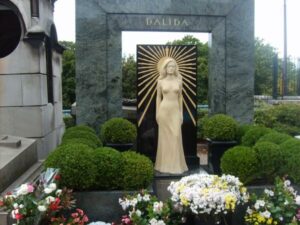
WHO AM I ? my BIO
Discover my SERVICES
My article: “I am not a tour guide I am Parisian (lol)“
More about me? :



